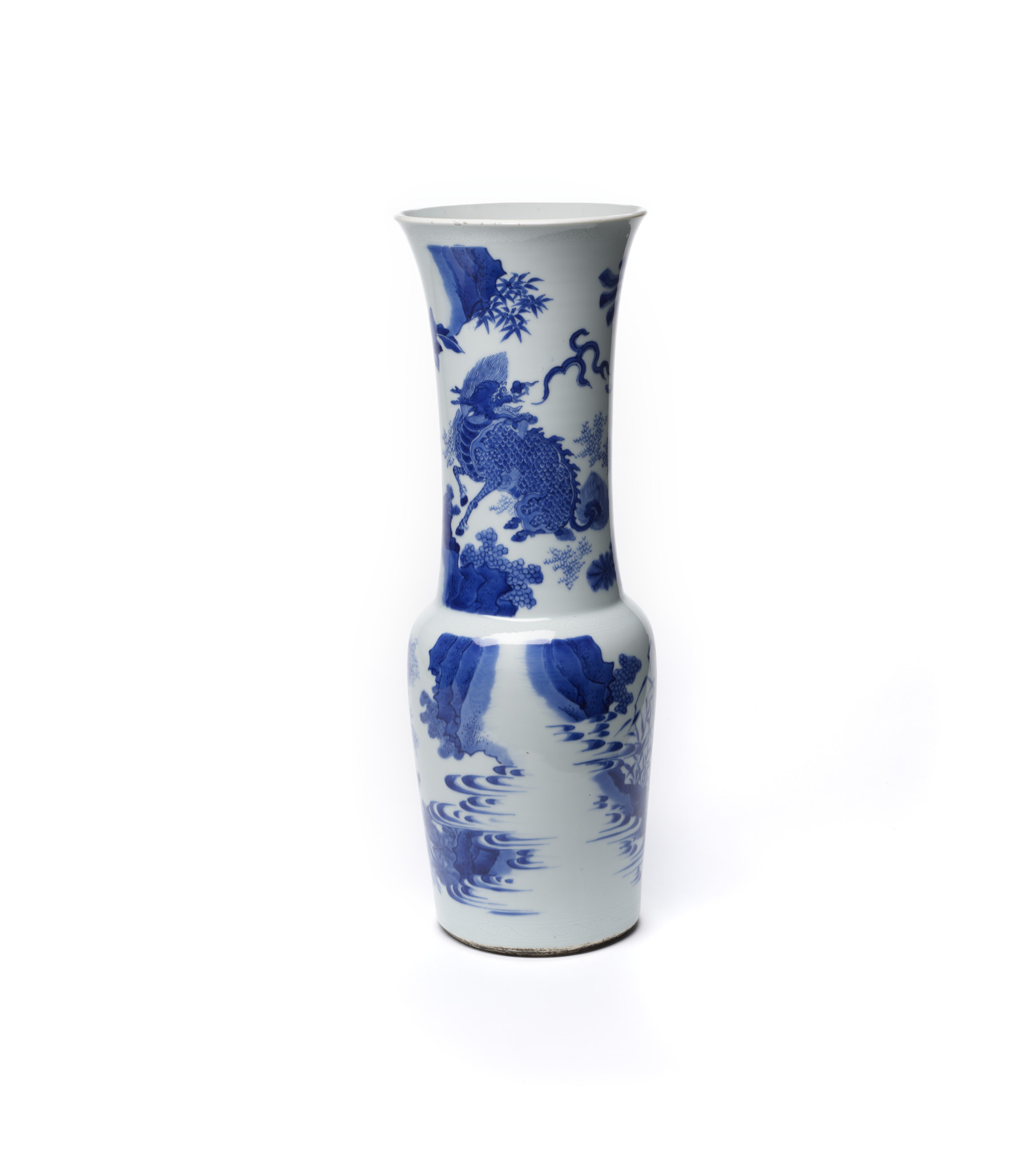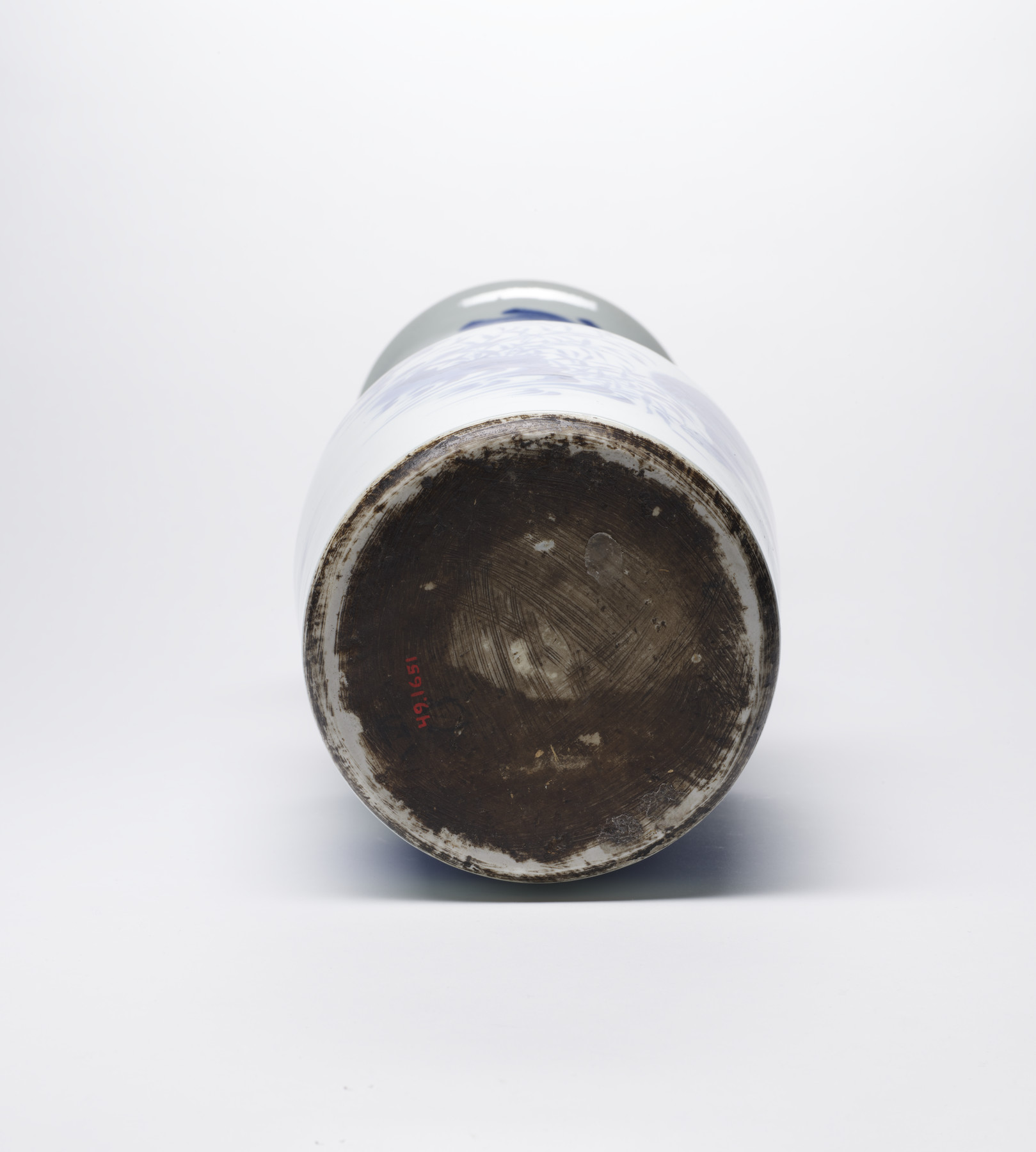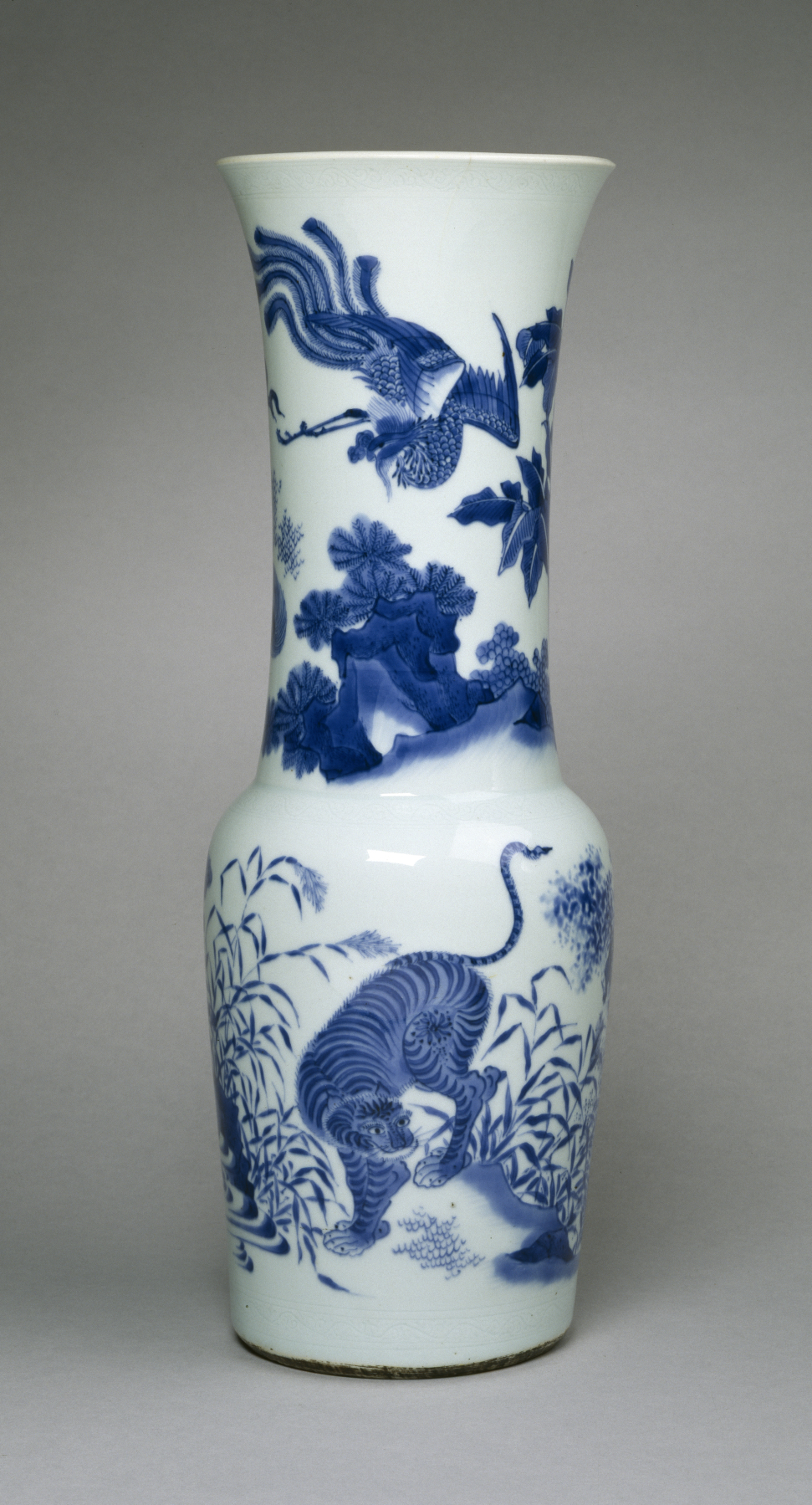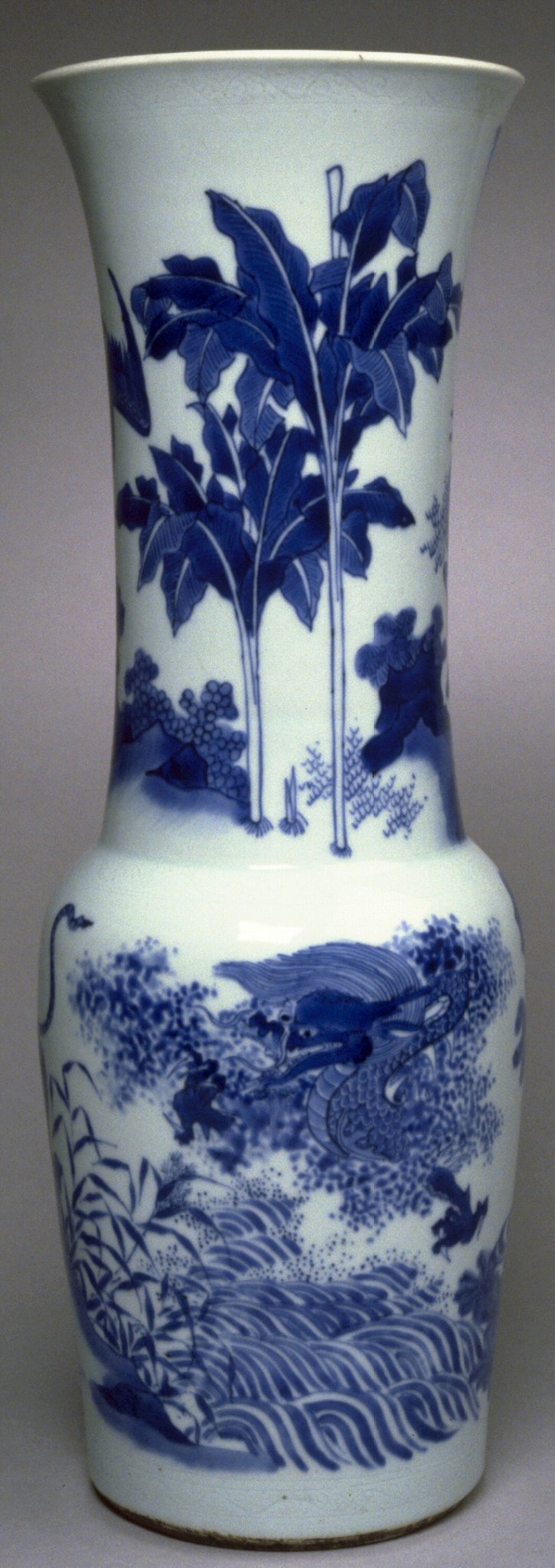Vase with Four Animals: Tiger, Dragon, Phoenix, and Qilin
(China )
This beaker-shaped vase is decorated with etched borders and a painted underglaze cobalt blue scene of a landscape and creatures; three of the four animals depicted are mythological. Together, the four animals are understood to represent the four cardinal directions. Engraved bands of waving designs appear at the bottom, shoulder, and top of the neck to divide the vessel and its painted scenes into two stories. The painter utilized a variety of techniques, confidently applying thin brush strokes and areas of diffused pigment similar to ink or watercolor on paper.
On the body appears a tiger, the one non-fantastical creature, confronting a dragon. The tiger among the reeds of the river bank glances over its side at the serpentine dragon bursting from the waves of the water with claws extended. Tigers and dragons appear as Taoist symbols for yin and yang, the tiger the king of the arid earth and the dragon lord of the skies, seas, and bringer of rain. The dragon is associated with the east while the tiger the west.
The neck represents another scene, including the mystical aviary phoenix soaring over rockery and the chimerical qilin besides plantain leaves. Juxtapositions of the masculine phoenix and female qilin are known to occur to symbolize yin and yang in a similar fashion as the dragon and tiger. Phoenixes, emblematic of the sun's heat, are associated with the south while the qilin, a creature with a dragon-like head and equine-like body, the north. The compilation of all four animals may be a symbol of prosperity, peace, and just ruling; in the middle years of the 17th century (a period of tumultuous transition between the Ming and Qing dynasties and the period the Manchu occupation of China was underway) that would have been more of a hope than a reality.
Provenance
Provenance (from the French provenir, 'to come from/forth') is the chronology of the ownership, custody, or location of a historical object. Learn more about provenance at the Walters.
Henry Walters, Baltimore [date and mode of acquisition unknown]; by bequest to Walters Art Museum, 1931.
Exhibitions
| 1980-1981 | Masterpieces of Chinese Porcelain. The Walters Art Gallery, Baltimore. |
Geographies
China (Place of Origin)
Measurements
H: 17 9/16 × Diam. at mouth: 6 in. (44.6 × 15.24 cm)
Credit Line
Acquired by Henry Walters
Accession Number
In libraries, galleries, museums, and archives, an accession number is a unique identifier assigned to each object in the collection.
In libraries, galleries, museums, and archives, an accession number is a unique identifier assigned to each object in the collection.
49.1651














